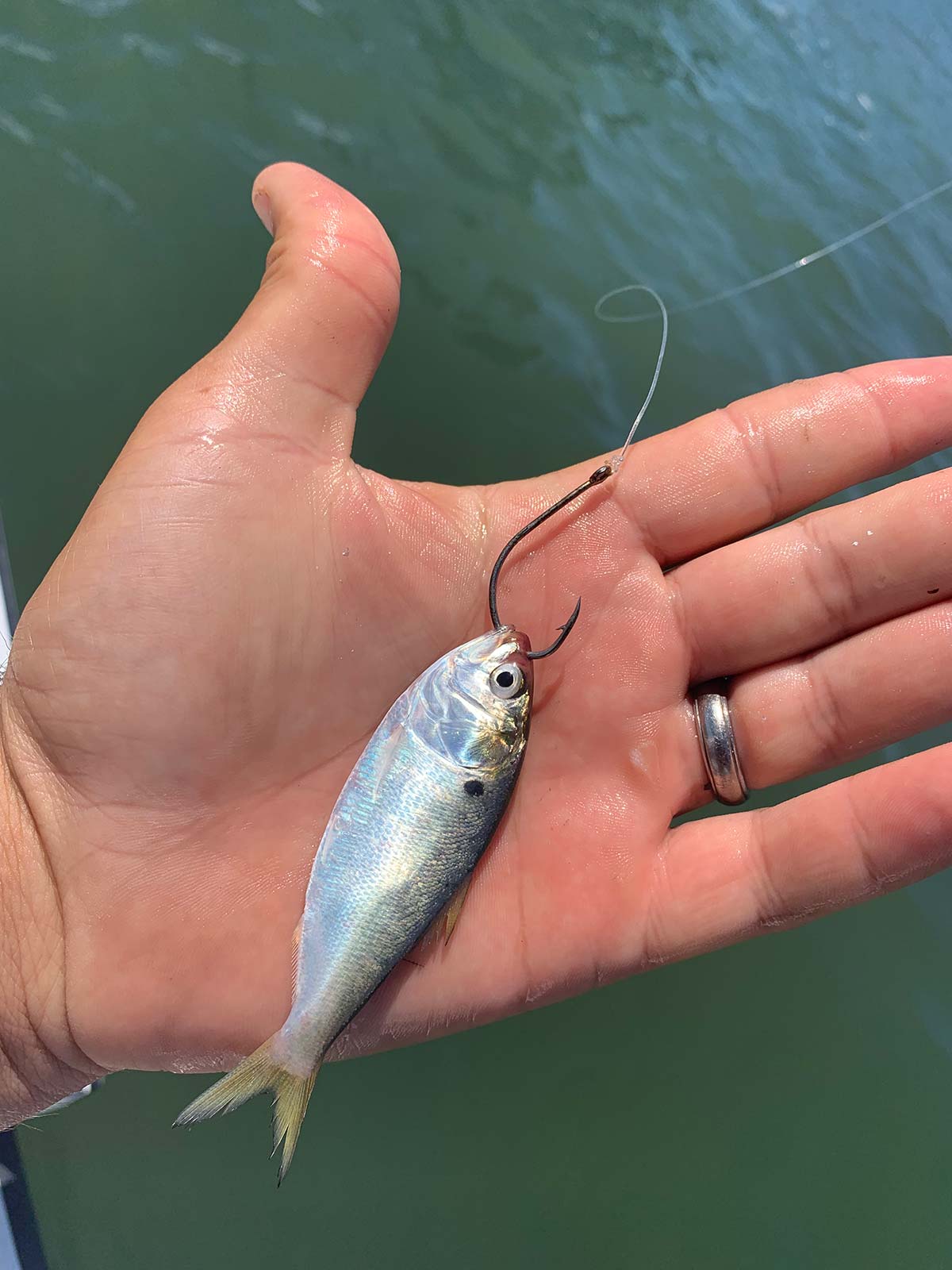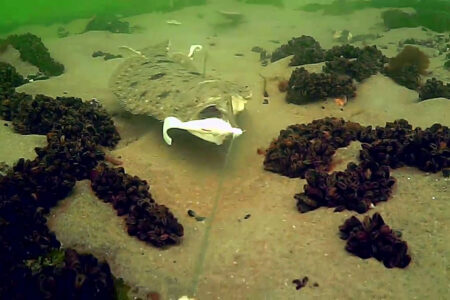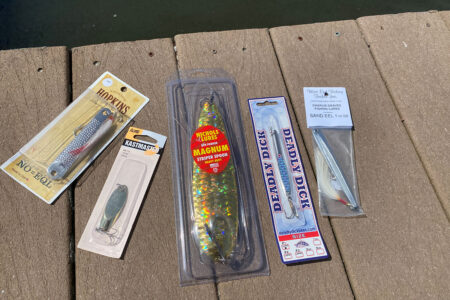
Strikes on peanuts are often violent and successful
As I was gliding away from the boat ramp in the Atlantic Highlands, NJ during the last week of April 2023, I observed something that got me intrigued and excited. Peanut bunker were schooling and flipping on the surface in the marina. April is not exactly when the baby menhaden are expected to arrive, but sure enough, there they were swimming in tight balls. What’s more, these weren’t the extra-tiny specimens that get gilled in the cast net, but rather the ideal size to target fluke, striped bass, weakfish and any other hungry species swimming around. Although I was heading out in pursuit of big striped bass, it was encouraging to see their early arrival, and in addition, I noted their presence each trip following that outing.
Baby menhaden – also referred to as peanuts, peanut bunker or pogies – invade estuary waters each spring. Like all fish, their arrival can vary and anglers might see them first popping anytime in May and well into June, but once they appear on the scene, they only build in numbers. The first waves are often tiny peanuts that require a tight mesh cast net for those hoping to capture some without gilling them due to the miniature size. The baby pogies grow rapidly as they feed on microscopic phytoplankton and zooplankton. When they achieve sizes ranging from 4 to 6 inches, they become outstanding baits
Peanuts can often be found in canals, boat basins, lagoons and creeks. Whereas other fish species prefer more active and moving waters, baby menhaden readily inhabit and live where the water is sluggish and even stagnant. A cast net is necessary to catch peanut bunker effectively. Small snag hooks will work, but they will also kill the bait. A larger cast net will determine how quickly bait can be made and throwing 8- to 10-footers is advised. Since these fish swim in circles, they are easy to capture, provided the net is sufficiently weighted. Cheap nets often don’t have a high sink rate so angler should invest in a quality net with one exception: those tossing nets in a few inches to a couple feet of water can get away with a lightweight net that is less expensive and more acceptable to ruin should the mesh get mangled on shells or other hang-ups. When approaching by boat, stealth helps and shutting down the motor will allow anglers to hear their telltale flips in the surrounding waters. Patience is key as the schools will eventually flow toward the vessel or the captain can creep the boat in direction of the small bunker.
Once caught, the pogies need to quickly be placed in an aerated livewell. Peanuts should be considered wimpy amongst the pantheon of other inshore baitfish when in captivity. They need constant aeration and clean water to extend their lives. Bubblers work, but the water needs to be changed out every 15 minutes.
Once on the fishing grounds, fluke fishermen are best to use a bare hook on a 3-foot leader to send peanuts to the bottom. This is not jig fishing, but instead vintage bait dragging. There’s no need for extras, and in fact, other attractants added to the rig will only hinder the movement of your natural bait. Strikes on peanuts are often violent and usually successful. Their soft bodies get punished and can’t be reused after a take. Furthermore, baits need to be changed between drifts unless they are placed in a bucket of water or the livewell. The same or similar live bait rig will work for school or tiderunner weakfish. They are the most mysterious prize of the backwater world in current times; however, if they are in the neighborhood, they will happily inhale a peanut. Stripers will also pile up on peanuts and weightless offerings can be tossed for success.
The offshore scene benefits from carrying peanuts out to the depths. Anglers readily ladle them toward the pots where mahi hide and inhabit. Almost instantly, dolphin get charged up and engage in chasing these baby bunker all over the surface creating a feeding frenzy. The larger the livewell, the more pogies a captain can carry to the grounds, hence allowing for greater quantities to be tossed as chum.
Speaking of chum, peanuts added to butterfish slicks for tuna create the same commotion! Tuna explode all over the live peanuts and can be seen boiling throughout. Anglers adding hooked peanuts within this activity can expect hook-ups. Sometimes only anglers using peanuts catch while those chunking butters come up with goose eggs. When feeding out the peanut, the key is to feed line within the live and cut chum slick in order to present the bait properly.
If you have access to these free and fantastic baits, but regularly pass them by, maybe it’s time for a change? Fishing and catching is far from a lock so why not utilize nature’s bounty in the form of bait to bring home dinner.



